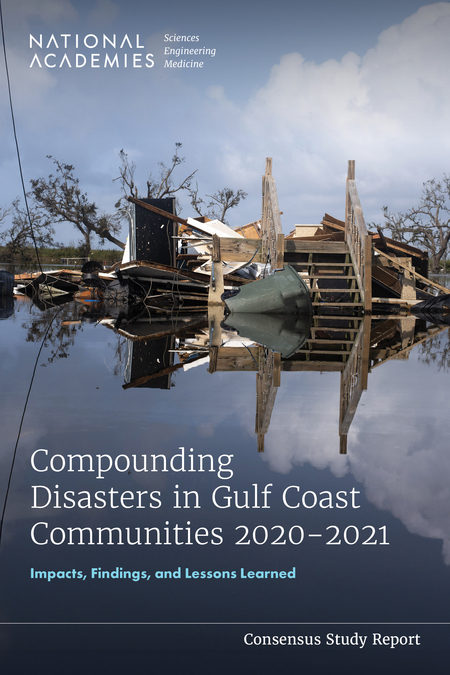Dangerous heat, more frequent and intense flooding and wildfires, and more violent hurricanes are constantly in the news cycle. What we know about the relationship between climate change and severe weather is worrying enough. We need not embellish reality with the kind of hyperbole or careless rhetoric that helps MAGA Republicans’ accusations of “climate hysteria” to resonate with voters.
After winter storm Uri shut down the Texas power grid in 2021, some Republicans (including state leaders) blamed renewable energy (WRONG), while some Democrats blamed climate change (UNPROVEN). Wind and solar generators failed during Uri at roughly the same rate as fossil fueled and nuclear generators. And there was no consensus among climate scientists at the time about whether climate change is making polar vortices more common or more severe.
Scholarly opinion is similarly undecided about the relationship between climate change and tornadoes. Tornadoes certainly damage power grid infrastructure. But neither the number nor intensity of tornadoes seems to be increasing.
On the other hand, tornadoes are often accompanied by thunderstorms. Because warmer air holds more moisture, the rainfall intensity of storms increases with global warming. But among the various types of severe weather, heavy rainfall is a relatively small threat to the grid.
Of course, hurricanes and tropical storms can also blow down or inundate grid infrastructure, as Superstorm Sandy demonstrated in 2012. Here, climate change probably is exacerbating the problem.
In their characteristically circumspect way, climate scientists at the National Oceanic and Atmospheric Administration put it this way:
- Sea level rise – which human activity has very likely been the main driver of since at least 1971 according to IPCC AR6 – should be causing higher coastal inundation levels for tropical cyclones that do occur, all else assumed equal.
- Tropical cyclone rainfall rates are projected to increase in the future (medium to high confidence) due to anthropogenic warming and accompanying increase in atmospheric moisture content. ….
- Tropical cyclone intensities globally are projected to increase (medium to high confidence) on average (by 1 to 10% according to model projections for a 2 degree Celsius global warming). This change would imply an even larger percentage increase in the destructive potential per storm, assuming no reduction in storm size. Rapid intensification is also projected to increase. Storm size responses to anthropogenic warming are uncertain.
- The global proportion of tropical cyclones that reach very intense (Category 4 and 5) levels is projected to increase (medium to high confidence) due to anthropogenic warming over the 21st century. There is less confidence in future projections of the global number of Category 4 and 5 storms, since most modeling studies project a decrease (or little change) in the global frequency of all tropical cyclones combined.
These predictions ought to be intuitive because they are based on simple ideas. Warmer oceans expand, raising sea levels. All else equal, therefore, a storm surge will do more damage when seas are higher. Likewise, hurricanes gain strength from warm water. As oceans warm, storm intensities increase, all else equal. This may be why the North Atlantic Basin and the Pacific Northwest are seeing more hurricanes. Historically cold waters there are not as cold as they used to be.
Given high winds and storm surges, it is unsurprising that hurricanes have been the source of many major power outages. And because storm severity will continue to rise along with atmospheric carbon, lots of research is going into predicting and preventing power outages.
The Electric Power Research Institute (EPRI, a utility trade group) and the Pacific Northwest National Laboratory (PNNL) recently published an interactive online model to predict the risk of future hurricane-induced power outages as the climate changes. Anyone can go to the model website and see what it has to say about these risks on a county-by-county basis. But the top-level headline is that the Gulf Coast states face a future of more and longer power outages caused by more and more powerful hurricanes.
This complements the National Academy of Sciences recent prediction that these states face a future of cascading natural disasters that could overwhelm the capacity of local communities to recover. As private and government insurers pull back from places like these hit hardest by climate change, the willingness of voters in many of these same states to reward politicians that deny climate science or the importance of these effects seems difficult to understand.
And this is a problem beyond the Gulf Coast. Citizens of Florida, coastal Georgia and the Carolinas, low-ling coastal regions of Delaware, Maryland and New Jersey can all expect more climate-related severe weather and grid outages. Most of these states are already spending money to try to hold back the sea, mitigate damage from future storms, and otherwise adapt to these changing circumstances. But until levels of atmospheric carbon stabilize and start to come down, those states will be playing catch up.
For more on making the grid more resilient in the face of climate risk, see these links to analyses from DOE, the GAO, Council on Foreign Relations, and EPRI. But the problem will go ever more severe with rising levels of atmospheric carbon. Stabilizing those levels by reducing carbon emissions is Job 1. – David Spence



